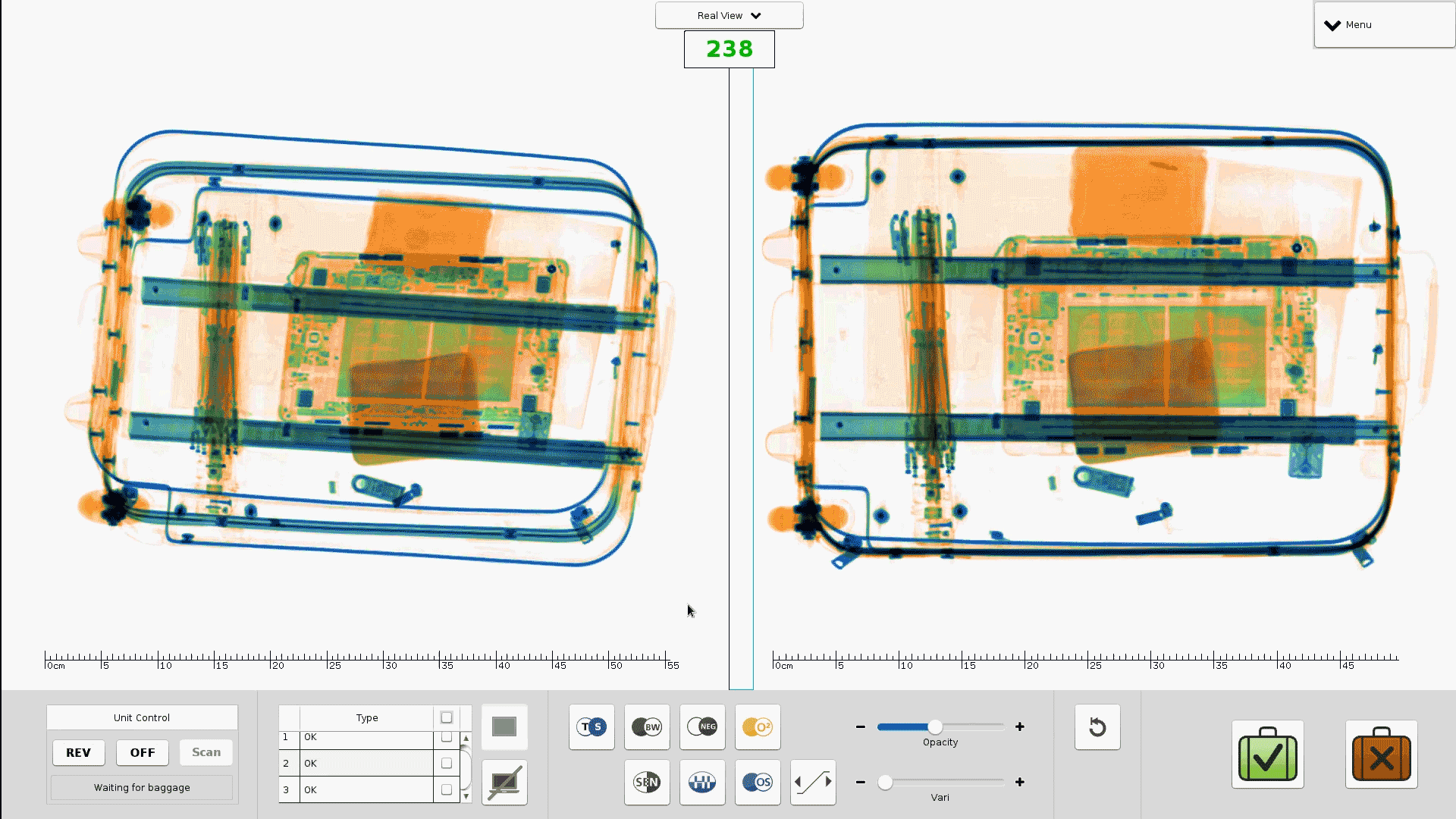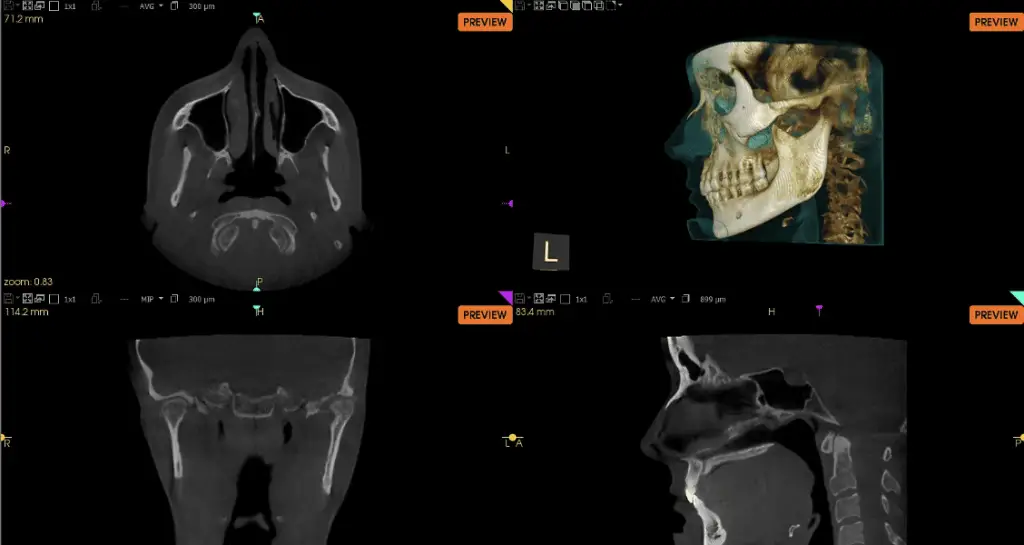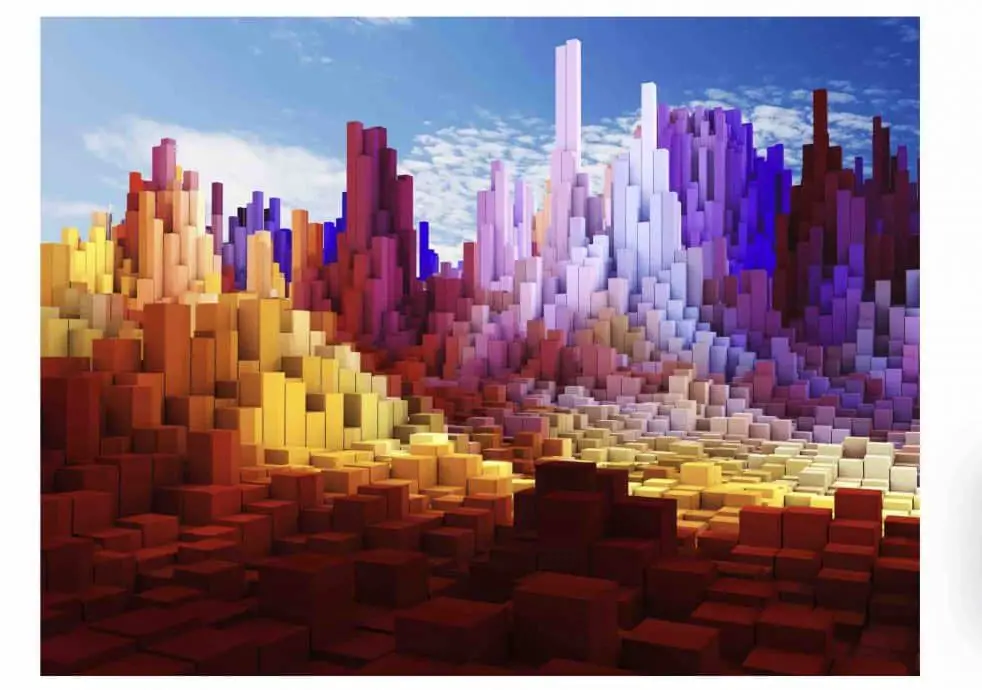Introduction
3D imaging has been continuously used and enhanced in various industries as well as in consumer products and in recent years, we’ve seen a lot of innovations in 3D imaging. It has become a necessary tool for face and body scanning before medical procedures, in making structural decisions, testing designs, prototyping, and many other industrial applications.
This article will briefly introduce 3D image processing, its application and its uses, as well as the future of 3D imaging.
Table of contents
What is 3D Image Processing?
“3D” means three-dimensional image, or something with three dimensions – length, height, and width (depth). Humans perceive the physical world in three spatial dimensions because of what is known as stereopsis, or 3D depth perception. Our left and right eyes see objects at slightly different angles and when the brain combines the two images, a 3D image is created. This allows us to determine the distance of objects around us from one another and from ourselves.
3D image processing is the method of using tools to construct images or graphics in a three-dimensional format to create the perception of depth identical to real-world objects.
For example, magnetic resonance imaging (MRI) is an imaging technique that shows human soft tissues such as the brain, cartilage, or muscles in a detailed 3D image to help medical professionals analyze or diagnose illnesses.
Airport security screening is another example. It uses computer tomography (CT imaging) to generate high-resolution 3D images in baggage screening to check whether luggage items are safe for airline travel.

Also Read: AI test that detects heart disease in just 20 seconds
How Does 3D Image Processing Work?
3D image processing follows these basic steps:
First, a 3D scanning technology is used to take multiple 2D images from different angles of an object. For example, CT and MRI scanners are used to capture images inside the human body. CT scans use X-rays while MRIs use computer-generated radio waves that pass through our body to produce images.
Second, 3D modeling software is used to reconstruct the 2D images to the object’s 3D form. Image reconstruction in CT and MRI uses algorithms to transform the raw 2D images into tomography images so they can be clinically analyzed.
Finally, the reconstructed image goes through image segmentation for 3D processing. Image segmentation is the method of dividing the image into regions to identify the characteristics and dimensions of the object such as density, volume, porosity, etc. In the case of brain MRI, image segmentation allows doctors to identify brain tissue types to analyze the patient’s brain anatomy.
One common method of 3D imaging is 3D laser scanning, which uses a laser to scan real objects and create a detailed, accurate representation of the object’s shape and surface. This technology is often used to create 3D models of real objects, such as buildings and sculptures, as well as to capture the shape and texture of flat surfaces. Additionally, 3D imaging can also be used to create 3D shapes from single images, allowing for the creation of detailed, accurate representations of real objects without the need for multiple images.
How is 3D Imaging Implemented?
3D imaging can be achieved by taking into consideration the complexity of the object visualized by the scanner or sensor and how closely it can be captured for high definition. 3D images can be captured up close or from a distance via plane, satellite, or drone. Close-range 3D imaging can be implemented through these methods:
Photogrammetry
Photogrammetry is a method of creating a 3D model by taking several overlapping images of an object, structure, or terrain from multiple angles and reconstructing them to create a 3D image. There are many photogrammetry software packages available for industrial use but there are also free software programs and apps that you can use to convert photos from your camera into 3D models.
Terrestrial LiDAR (tLiDAR)
This technique uses a time of flight (ToF) sensor to calculate distance using the time it took for light to travel between two points to create a geometrically accurate 3D model of an object. tLiDAR is used in manufacturing, automotive, healthcare, security and surveillance, and robotics.
Mobile phones with LiDAR capabilities that allow consumers to capture 3D images have recently become popular, as well as AR/VR headsets that give a dimension experience close to reality.
Structured light scanning (SLS)
3D imaging using SLS is achieved by using a scanning device for calculating the 3D form of an object using a structured light pattern and a camera system. The scanner projects parallel light patterns onto the target object, bending it as it hits the irregular surface, and it’s then processed by the scanning software.
Some of its important uses include measuring the volume of objects, scanning museum collections for virtual tours, facial recognition systems, skin surface analysis for cosmetics and pharmaceutical research, and simulating intricate design details for CAD.
Triangulation
In laser triangulation 3D scanning technology, the scanner casts a laser on the object and uses the camera to get the laser dot’s location. A triangle is formed from the laser dot, camera, and laser emitter that capture the length, distance, and angle from the object to the scanner. The collected information about the distances is used by the software to create a 3D model of the object’s surface. Triangulation-based laser scanners have a limited range but they generate high-resolution and accurate 3D models. This technique is applicable for scanning smaller objects and is commonly used in handheld 3D scanners.
Reflectance transformation imaging (RTI)
Reflectance transformation imaging (RTI) is a 3D imaging method that captures multiple images while recording every light source that is projected with each shot. When these are combined and processed by the software, it reveals high-resolution shadows and angles – details that may not be visible to the naked eye.
This technique is commonly used in archeology and forensic science which require the conservation and investigation of fragile objects that require minimal or no handling.
There are many ways to generate 3D imaging technology to replicate any shape imaginable while enhancing processes and workflow. The important thing is to know the essential criteria when choosing a 3D technology to implement such as accuracy, resolution, speed, size and distance of the objects to be captured, software, and other factors that are essential to the project or task.
What Problems Does 3D Image Processing Solve?
3D image processing helps us mitigate complex problems in construction, manufacturing, healthcare, aerospace, automotive, and other industries. With 3D imaging, users are empowered to overcome challenges by getting exact copies of objects so they can analyze problems and visualize solutions in greater detail and with higher accuracy.
These are the ways 3D imaging helps us find solutions to problems:
Quality control and risk management
3D imaging provides means of testing, predicting weaknesses, and identifying errors to ensure product quality is maintained and enhanced. It can provide detailed images which leads to good quality.
Non-destructive testing
3D imaging is used to evaluate the properties of materials, surfaces, or systems without contact or damage. This method is used in visual inspection, radiography, mechanical and electronic parts, topography, etc.
Speed
High-speed 3D imaging can produce prototypes of objects and surroundings within hours, cutting the wait times and subsequently the time to provide diagnosis or resolution.
Cost savings
Implementing 3D imaging in processes saves time and money by eliminating unnecessary tools, reducing errors, and lowering labor costs.
Applications of 3D Imaging
Users get the best results possible no matter the complexity of the object with the application of 3D imaging. Accurate and high-resolution 3D images of objects are used for many medical, industrial, and consumer applications. The purpose of 3D imaging is to view objects of interest from various angles to aid in analyzing, measuring, and planning courses of action.
For example, doctors can perform contactless examinations of the human anatomy to make proper diagnoses, plan for surgical procedures, and conduct test treatments. Forensics can properly investigate crimes by reconstructing accidents and crime scenes using 3D scanners. Archeologists use 3D imaging technology to map topography for excavations and document archaeological discoveries.
Designers and engineers in the real estate, aerospace, automotive, manufacturing, and robotics industries gain dimensional information and quantitative representation so they can perform reverse engineering, quality control, consistency test, structural analysis, and detect defects.
3D Imaging Camera
Regular cameras can only capture images in 2D. Human eyes, on the other hand, see things in 3D because of stereopsis, or binocular vision. Our ability to see depth is dependent on the slightly different vantage points of each eye which the brain combines to form a single, 3D image.
3D cameras recreate binocular vision by imitating the human eyes. They have lenses that can capture images from different angles to provide depth and distance of a subject. As technology continues to advance, 3D imaging is at our fingertips using ToF (Time of Flight). Mobile phones now have ToF sensors that use the speed of light to measure and determine distance and depth, allowing us to take 3D photos.
Urban Design
Virtual reality is used in urban design to view 3D models of cities and urban spaces. 3D city models use technologies such as Geographic Information System (GIS), computer-based urban spatial analysis, Lidar, 360-degree photogrammetry, surveying tools, and software to create a virtual replica of urban elements such as the topography, terrains, roads, public transport, sewerage, landmarks, infrastructure, vegetation, and 3d architectural models of buildings.
3D mapping adds depth or dimension to the digital city model and allows users to rotate and visualize from different perspectives. 3D urban modeling helps create functional cities and is also used in proper urban planning such as transportation and utility networks, emergency response mapping, vehicle and pedestrian routing, railways, etc.
3D imaging is now used to build polygon models which can help build 3D surface models based on object reconstruction and 3D scanning applications and 360-Degree photogrammetry-based 3-Dimensional model. Aerial images help in building large scale urban design 3d models using 3d objects and 3D shape scanning.

Geo-Spatial Analysis
3D geospatial analysis is the process of collecting, collating, and visualizing geographic information of the Earth’s surface or human-made landscape and architecture using geographic information system (GIS), satellite imagery, global position system (GPS), and other sensor and location-based technologies.
3D geospatial data has accurate measurement and geo-location representation that are used to create 3D scale models, maps, and visualization of the plan, design, and management of complex construction projects, heritage sites, coastal areas, and any landscape. These are then used to forecast human behavior and natural phenomena critical in urban development, feasibility studies, disaster management, building management plan, flood analysis, defense, insurance underwriting, real estate, and many more.
3D Dental Imaging
Dentists use dental cone beam computed Tomographyechnology (CBCT) machines to produce 3D images of the teeth and jaw. With the 3D images, they can accurately measure and visualize the height, width, and distance between nerves, bones, and tissues.
This information helps them to view teeth and jaw position to plan for a surgical procedure, oral implants and orthodontic treatments, detect signs of dental disease and tumors, and accurately diagnose and treat oral health problems better than traditional 2D dental X-rays.
CBCT also produces lower radiation when capturing high-quality images than X-rays. Moreover, dentists can manipulate the images by zooming in and out, rotating, and drawing lines to enhance the visualization and analysis of dental structures, density, and size.

3D Imaging Mammograms
Also called digital breast Tomosynthesis (DBT), 3D imaging mammograms allow doctors to have a better image of the breast tissue to discover breast cancer that is not visible in 2D mammography.
Overlapping tissue can block masses and distortions that can turn out to be cancerous. Unlike 2D mammograms that only obtain two images (from the top and from the side) which may show overlapping tissue of the breast, 3D mammograms take 15 thin images in an arc over the breast. It is then reconstructed into a 3D image that does not overlap through the breast tissue to provide accurate information on breast density.
This results in an increased breast cancer detection rate and fewer patients having to return for additional tests and evaluation.
3D Imaging Ultrasound
A 3D imaging ultrasound uses sound waves to create a 3D image. An ultrasound machine’s transducer releases high-frequency sound waves that penetrate the skin which are reflected back when they hit organs and tissues. The machine captures the waves that produce 2D images which are then reconstructed by the built-in software to form a 3D model. With the technology nowadays you can request 3-D digital imaging.
3D ultrasound is used in prenatal care to show fetal development, gender, due date, and pregnancy issues. Other than pregnancy, 3D ultrasound is a method used to diagnose tumors, cysts, and kidney stones and analyze the heart, prostate, uterus, and other parts of the body. Most importantly, it is non-invasive, painless, and free from radiation.
3D Mobile Imaging
Mobile devices such as cell phones, digital cameras, and drones now have the ability to capture images in 3D. This feature is expected to open opportunities in several areas such as remote work, security, sports, health and wellness, and much more.
With 3D imaging on smartphones, anyone can take high-quality photos that are useful for marketing products of online businesses. Real estate agents can offer 3D virtual tours of homes to prospective buyers. Athletes and health enthusiasts can download 3D body posture evaluation apps to help them analyze body posture and correct angles when exercising.
Facial recognition such as Apple’s FaceID uses 3D mapping to make a more secure facial recognition system. Hand-held gaming devices also feature 3D graphics to give a better gaming experience for gamers. Android users can download apps such as LucidPix that can convert 2D photos to 3D. Last but not least, social media apps such as Facebook supports 3D images where you can post your products, services, and memes.
Also Read: How Can 3D Imaging Improve Medical Imaging and Diagnoses
Go Beyond 3D Image Processing
Advancements in technology present the opportunity to provide more solutions using 3D imaging. Numerous innovations have dramatically unfolded the applications of 3D beyond simple 3D processing into new territories of changing the way we work and make decisions. Here are a few ways 3D imaging paired with AI and cloud computing is emerging as the future of 3D:
3D printing using 3D printer has made a breakthrough that confirms its importance specifically in the medical and manufacturing industries. Making metal and multi-material printing available in the consumer market and printing human organs for transplant is something we can look forward to in the future.
Enhanced CAD software that can convert 3D scans to a CAD file and easily test different versions using the software without changing the model.
Integrating AI with 3D scanning will produce intelligent robots that can make decisions based on a predetermined formula and detect defects that are invisible to the human eye.
3D technology will play a very important role in cultural preservation by scanning and examining artifacts without damaging them. Museum goers will also be able to download and print objects to freely study and investigate them.
3D imaging technology has been adopted by several industries and is playing a very important role in changing how we perform our work and solve our problems on a global scale. With the help of AI and 3D imaging advancements, 3D technology will become more accessible so more users can reap the benefits of fast, high-resolution 3D images.
References
Höhne, Karl H., et al. 3D Imaging in Medicine: Algorithms, Systems, Applications. Springer Science & Business Media, 2012.
Liu, Yonghuai, et al. 3D Imaging, Analysis and Applications. Springer Nature, 2020.
Patnaik, Srikanta, et al. 3D Imaging—Multidimensional Signal Processing and Deep Learning: Multidimensional Signals, Video Processing and Applications, Volume 2. Springer Nature, 2023.
Udupa, Jayaram K., and Gabor T. Herman. 3D Imaging in Medicine, Second Edition. CRC Press, 1999.
